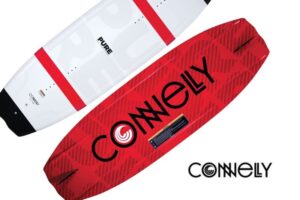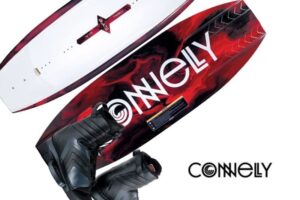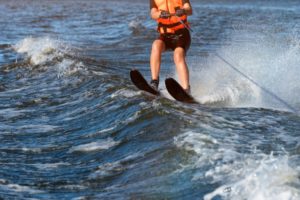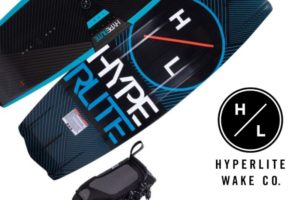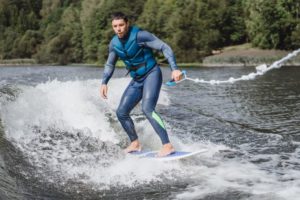The Connelly Pure wakeboard is an ideal wakeboard for beginners and intermediate wakeboarders. Provides a stable ride with great pop.
Read MoreWakeboarding For Beginners
Everything beginner wakeboarders need to know to confidently and safely get out on the water
Welcome to the sport of wakeboarding!
If you are a beginner wakeboarder, we're glad you found us. We hope this website will be helpful to you in providing information about wakeboarding and will help you find the right gear to get started.
Wakeboarding is a sport that began in the 1960’s, but has really become increasingly popular since the 1980’s. Basically, it’s a sport where you are strapped into a board that floats, called a wakeboard, and you are pulled either behind a boat or jet ski, or pulled along by powered cables in a cable park.
Wakeboarding is a lot of fun and a great way to spend a summer’s day with family and friends. It’s fun to share your successes and have a laugh over the inevitable crashes together. And you have the added benefits of a day in the great outdoors, doing some rigorous exercise.
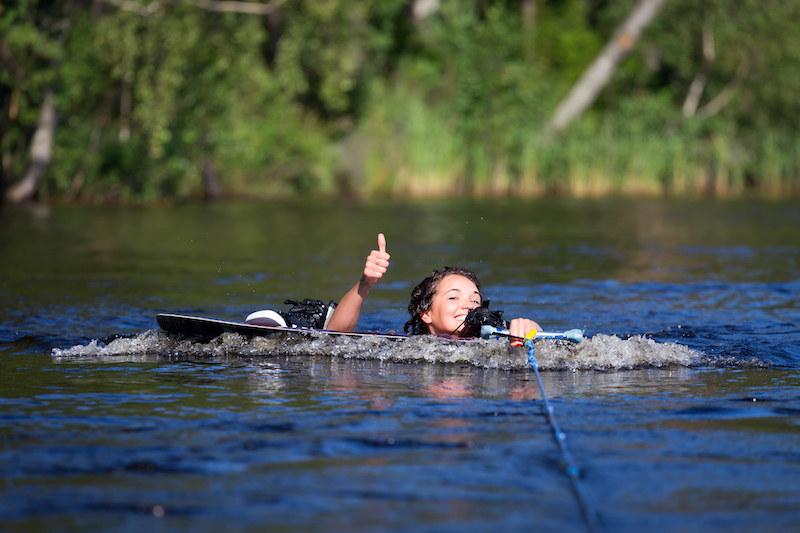
Wakeboarding behind a boat or jet ski is a lot of fun because you can take in the scenery of the lake or river where you are riding, and this can be quite an invigorating and refreshing experience. The speed at which you are being towed at can be carefully controlled by the captain of the boat, or the jet ski rider, finding a speed that is suitable for your level of wakeboarding and the conditions of the water. If you fall off, which is likely when you are learning, the boat just circles around to come and pick you up. With the aide of your life jacket and the floating wakeboard you basically just relax in the water, with your arm raised, until you are picked up.
Cable wakeboarding is a bit different, but also has it’s benefits. You don’t need a boat and therefore it’s perhaps more affordable. Depending on where you live it may be more accessible and good for a quick run just to practise those skills. The practise you get in a cable park will definitely improve your boat riding too.
What Wakeboarding Gear do I need?
Whenever you are starting something new it’s always a little tempting to get carried away making lots of new purchases for your new endeavour, which can become quite expensive. Wakeboarding gear isn’t necessarily cheap and there are a lot of different options available.
If you buy good quality gear, it will last you a long time and be suitable for a variety of riders. The trick is to buy gear that is suitable for a range of riders and then it’s easier to share around, especially if you have a few beginning wakeboarders on the boat.
1. A Wakeboard
Wakeboards come in all different shapes and sizes. Some are specifically designed for men, some for women and others are intended to be unisex boards.
Generally speaking, when you are choosing a wakeboard for beginners you probably want to avoid the pro models. Instead, choose a board that is a good size, not too small as the greater surface area will be easier to ride. You also want it to have deeper fins as this will provide more stability and control. And finally, continuous rocker or hybrid rocker wakeboards are probably easier to control for beginners. They tend to be smoother and more predictable across the water.
Find a great Beginner Wakeboard
When you're starting out you want a wakeboard that is idealfor beginners to set you up for success.
2. Bindings or Boots
Ideally when you are buying anew wakeboard it’s great to buy a package, which includes the bindings (or the boots) for the wakeboard. These are important becuase they provide the connection between the rider and the board.
Ideally, you want comfortable bindings that can fit a range of foot sizes. Some bindings are open-toes whilst others are closed-too which can be personal preference.
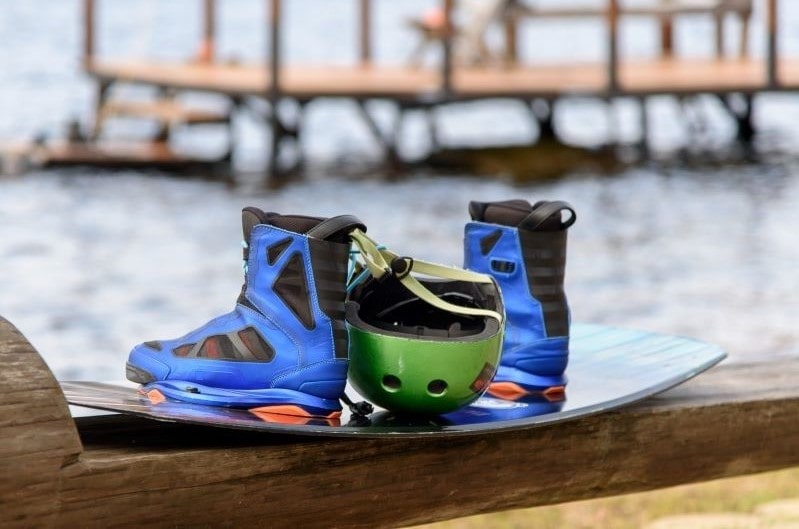
3. A life jacket or buoyancy suit
Life jackets or life vests are essential for all water sports and it is best to check with your state’s individual regulations on this. Generally speaking, any water sport activity requires the use of a U.S. Coastguard-approved life jacket. If you are wakeboarding behind a jet ski, then both the rider and spotter need to also be wearing a life jacket.
You want a life jacket that fits well and each person on a boat who will potentially be wakeboarding needs to ensure that there is a life jacket suitable for them.
Buoyancy suits are more expensive, but have the flotation elements built into the wetsuit. These can be a little less bulky, and are great if the water is a bit chilly. Of course the downside is it’s harder to share between wakeboarders, so these may not be ideal if you have a group of beginning wakeboarders.
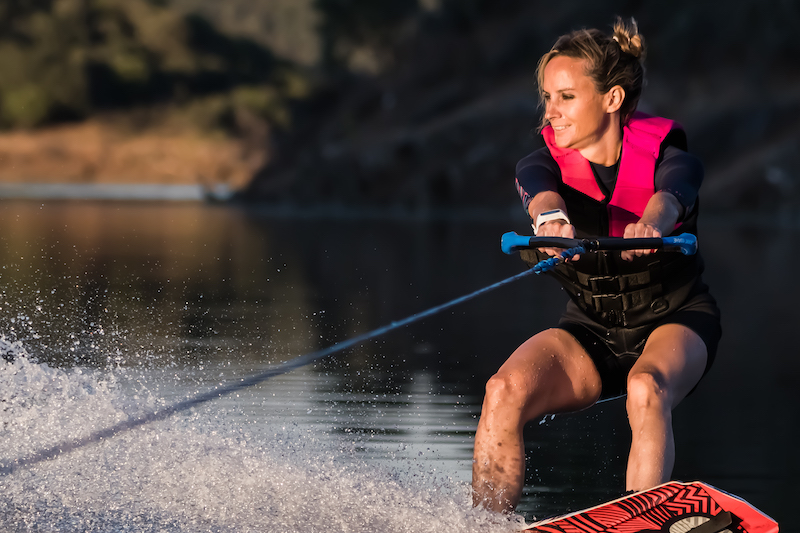
4. Wakeboarding rope and handle
Wakeboarding ropes are specifically designed for wakeboarding and have very little stretch in them. This allows the wakeboarder to keep the tension on the rope which is necessary for spins, inverts and smooth landings.
The length of the wakeboarding rope depends on the skill of the rider, their style of wakeboarding and personal preference. Generally, it is better for beginners to have a shorter rope length as this keeps them in closer to the boat. The ideal position is riding just where the wake is breaking.
4. Optional Gear
Wetsuits and helmets. These are probably the main two optional pieces of gear that you might want to invest in.
Helmets may be a particularly good idea when you are wakeboarding in a cable park as the ramps and jumps are obviously unforgiving should you have an unfortunate accident.
Wetsuits are a good idea if you feel the cold, or live somewhere where there’s only a few warm weeks in summer and you want to stretch your wakeboarding season out. You can get either full-length or short sleeved wetsuits depending on the conditions you will be wakeboarding in. They’re sometimes a good idea for cable parks when you tend to be in the water for longer periods. For beginner wakeboarders getting used to the feel of a wetsuit may be a little off putting.
Are Wakeboarding Lessons A Good Idea?
Search
Brands
Wakeboarder
Popular Buyer's Guides
Recent Articles
If you have never wakeboarded before you will definitely benefit from some wakeboarding lessons from experienced professionals. Watching online videos is great and can be helpful, but sometimes the improvement that can be gained by having someone with you provides a much greater reward for your investment of time. This can give you a real boost of confidence to learn the foundational techniques and skills early on, and correctly, which will help you progress in your wakeboarding much quicker.
Some companies offer wakeboarding lessons from their boat whilst others allow you to “hire an instructor” to come out on your boat with you for the day. If you have a group of beginning wakeboarders this can be a fun, cost effective way to build your skills and have fun together out on the water. Successes early on are definitely going to have you wanting to come back for more.
Many cable parks offer wakeboarding lessons to get you started on the right foot and these are not usually too expensive to give you that bit of advice and training.
Wondering Where To Wakeboard?
Your first time Wakeboarding
It's time to get out on the water - how do you wakeboard and what should you expect?
For some people, getting up on a wakeboard seems as natural as running a race. For others, it takes a bit longer. When I started wakeboarding I would go earlier in the morning – less people out on the water and if you can go before the wind picks up, you’ll have a smoother ride which is perfect for wakeboarding beginners who are just getting started.
Stance
One of the first things to consider is whether you will ride regular (left foot forward) or goofy (right foot forward). If you have done any skateboarding, surfing or snowboarding, you probably have this figured out. But if not, it’s easy to determine. Your dominant foot is going to be your back foot as it will help with your balance and stability. To determine your dominant foot try one of the following.
1. While standing, put a pair of shorts or pants on. The foot you balance on will be your dominant foot.
2. Stand at the bottom of a staircase ready to run up the stairs. Have someone yell “go”. The foot you step up with will be your dominant foot.
3. Stand with your eyes closed and feet shoulder width apart. Have someone gently push you from behine and the foot that goes forward to catch you will be your dominant foot.
On the water, you will probably naturally ride in a stance that has your dominant foot at the rear. But you can try out both ways and see which one is more comfortable.
Physical Exertion
When you start wakeboarding, you are using muscles that you may not even know existed. Which means two things.
Firstly, you can tire easily, especially if you are having trouble getting up. Holding on to the rope while you feel yourself dragging through the water can be exhausting. Better to let go and float, and wait for the boat to circle round. When you are coming up out of the water, your thighs are working hard to push you up. If you get up and fall and are doing multiple starts, this can quickly wear you out. Take a break, recover and have another go later, rather than persisting when you are becoming fatigued. We have a helpful article with tips for getting up on a wakeboard.
Secondly, because you are using new muscles, you could be sore in the next day or two. It doesn’t mean you have injured yourself, but you may have worked on building some more muscle tissue… congratulations!
Find the right wakeboard and wakeboarding gear
Recommendations for kids, beginners, women, men and experienced wakeboarders
Progressing Your Beginner Wakeboarding Skills
You've made it up and standing and stayed up for a loop around the dam, or the cable park... now what?
Now the fun begins. As you gain confidence with your new wakeboarding skills you can start to stretch yourself, approach the wake, cross into the flats on the outside of the wake, and begin carving up the glass!
With regular practise it doesn’t take long to start progressing to some beginner wakeboarding tricks. These will start to challenge you and give that bit of an adrenaline rush as you tackle something new and experience success. Take it slowly, or faster if you just love it and don’t have the patience, and in no time at all you’ll be expanding your repertoire and joining the thousands who love the sport of wakeboarding.
If you want to compete, there are a range of competitions around the country, and globally, sponsored by the major wakeboarding brands. Getting involved in the waterboarding community is a great way to learn. While standing in line at the wake park, people will often give you a little tip or bit of advice that will help you land your next trick smoothly and most people I know who love wakeboarding, and water sports in general, are happy to share their sport with friends and family.
A Final Word For Beginner Wakeboarders
Water Sport Safety
Just a quick word on water sort safety to finish up with. Be sure to familiarise yourself with the regulations in your state that surround water sports and boating. Licensing is often required for boats and jet skis.
Remember to work out hand signals with the people on the boat or the back of the jet ski so you can communicate with each other and be sure that beginner wakeborders are familiar with them. When you fall in the water, keep your arm raised so other boats and jet skis can clearly see you.
And finally, make sure you have the right gear for beginning wakeboarders, be sun safe out on the water and have fun!
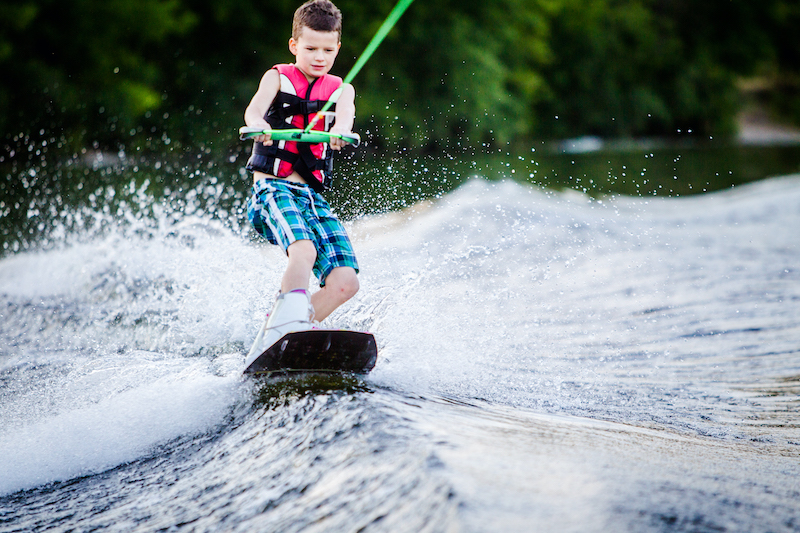
The Latest Articles for Beginner Wakeboarders
We have plenty of helpful tips on waterboarding for beginners. Everything from how-to guides to advice on the best gear.
Connelly Blaze Wakeboard Review
The Connelly Blaze wakeboard package is ideal for beginner to experienced wakeboarders. Packed with features, it's a responsive board...
Read MoreRonix Vision Kids Wakeboard Review
The Ronix Vision Kids wakeboard is specifically deigned and constructed for better stability and solid progression for young riders.
Read MoreRonix Krush Wakeboard Review
The Ronix Krush wakeboard is an ideal board for beginners. A thinner profiled board gives you great performance and more...
Read MoreWakeboarding vs Water Skiing
Wakeboarding vs water skiing, is there a winner or do you just love both? Learn what makes them similar and...
Read MoreHyperlite State Jr Wakeboard Review
The Hyperlite State Jr wakeboard is designed to give beginner and intermediate wakeboarders a solid foundation and confidence on the...
Read MoreConnelly Lotus Wakeboard Review
A quality Connelly women's wakeboard designed to help you learn the basics fast. Ideal for beginners and intermediate wakeboarders.
Read MoreWakesurfing vs Wakeboarding
Wakesurfing vs wakeboarding - how easy is the change over? If you've been wakeboarding for a while it may be...
Read MoreSlingshot Super Grom Wakeboard Review
The Slingshot Super Grom wakeboard is a high performance park board that will give young, advanced wakeboarders a lively ride....
Read More
